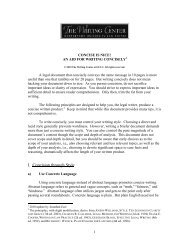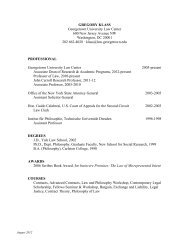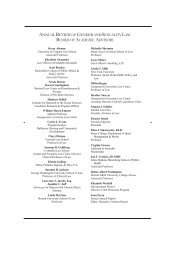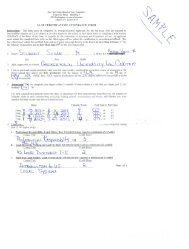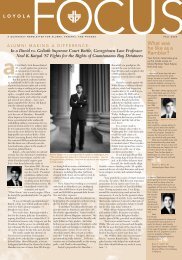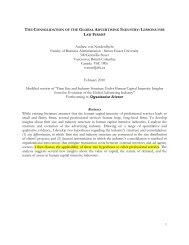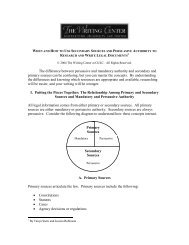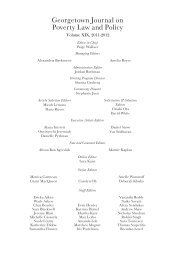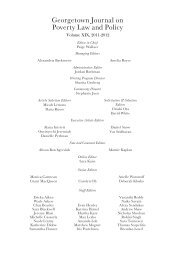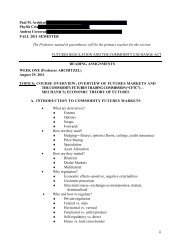Date: April 12, 2013 Topic: The Shrinking ... - Georgetown Law
Date: April 12, 2013 Topic: The Shrinking ... - Georgetown Law
Date: April 12, 2013 Topic: The Shrinking ... - Georgetown Law
Create successful ePaper yourself
Turn your PDF publications into a flip-book with our unique Google optimized e-Paper software.
General Counsel with Power? 2011 <br />
Whilst some firms reduced reliance on external lawyers by increasing the size of the internal legal <br />
department, a small but significant number of firms have done so by cutting back on the size of the <br />
internal legal department. On first reading, this is counter-‐intuitive. Surely, a reduction in internal legal <br />
resources would result in shifting more work out to external lawyers. However, in a small number of <br />
cases, the general counsel in charge achieved heavier reliance on in-‐house legal resources at the same <br />
time as reducing in-‐house lawyer headcount (see Table 2 for some extreme examples). <br />
Table 2: Relationship between in-‐house lawyers and % of legal work done in-‐house in the last 5 years <br />
Number of in-‐house lawyers <br />
% legal work done in-‐house <br />
Case I 30 15 21% 80% <br />
Case II 750 650 48% 55% <br />
Case III 30 15 77% 88% <br />
Source: Author’s interviews. <br />
This evidence is consistent with the claim that ‘supply creates demand’ for external legal work. In-‐house <br />
lawyers may go outside to get confirmation from external lawyers of what they are doing. A general <br />
counsel at a financial institution noted: ‘a result of having more in-‐house lawyers is that you are creating <br />
more external spend. So, the more activity you’re creating through that operating model, the more <br />
there is a sort of on-‐cost of doing external business’. Conversely, a reduction in in-‐house lawyers can <br />
trigger a reduction in the outside legal cost. Through rigorous in-‐house processes for avoiding or <br />
resolving disputes before they became litigation, an energy company reduced its external spending on <br />
litigation. Similarly, the same firm reduced its legal cost on patenting by being more disciplined about <br />
what went into its intellectual property portfolio. <strong>The</strong>se are instances, not of in-‐sourcing, but of the <br />
elimination of the need for outside counsel. <br />
Summary <br />
With a diverse range of sectors and corporate structures in our sample, apples-‐to-‐apples comparisons <br />
are not easy and come with many caveats. Moreover, the diversity of practices captured by this study <br />
challenges existing studies and surveys that claim to have identified dominant definitive trends or <br />
fashions in the legal sector. This study has identified clear patterns in completing principles driving <br />
general counsel’s attempts to change the size and shape of legal departments. First, there are four <br />
generic types of general counsel: Externalizer Type 1, Externalizer Type 2, Mid-‐ranger, and Internalizer. <br />
Second, of these four, Externalizer Type 2 (proactively managing legal networks) and Internalizer <br />
(proactively in-‐sourcing legal resources) are the ones with the biggest appetite for change. As noted <br />
above, Internalizers have taken seriously the following dictum by the management guru Peter Drucker: <br />
‘there is nothing more wasteful than doing more efficiently that which need not be done.’ First and <br />
foremost, internalizers have eliminated wasteful supply-‐induced demand for legal services. <br />
We turn, in the next chapter, to how the nature of relationships between the corporate legal <br />
department and external law firms has been changing. <br />
8 <br />
Said Business School | University of Oxford



